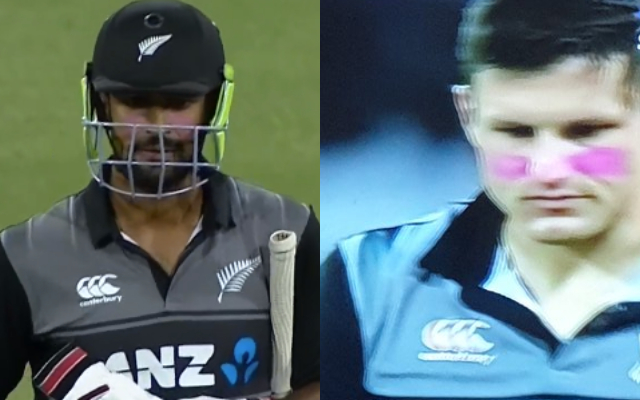New Zealand Cricket’s pink zinc contains 'banned' ingredients
One major ingredient used in the pink zinc -- octocrylene -- has been banned in Hawaii, the US Virgin Islands and Palau since it is considered harmful for the marine ecosystems.
2 Min Read


Pink zinc given to fans by New Zealand Cricket and major sponsor ANZ at international matches contains microplastics, nanoparticles and substances that are banned in other parts of the planet. It is distributed for games featuring the Black Caps and White Ferns. Both the men’s and women’s teams of New Zealand wore the zinc at the double-header in Tauranga recently.
The substance is part of the “Show Your Colours” campaign promoting the White Ferns in the run-up to the T20 World Cup in Australia starting February 21. ANZ is spearheading the promotion.
New Zealand-based Stuff.co.nz reported about the issue, saying one major ingredient used in the pink zinc — octocrylene — has been banned in Hawaii, the US Virgin Islands and Palau since it is considered harmful for the marine ecosystems. Its other ingredients banned abroad are Ethylhexyl methoxycinnamate and benzophenone-3, found in sunscreens to block ultraviolet rays.
All the three ingredients are restricted in New Zealand with the Environmental Protection Agency guidelines saying that their use must be limited to below a certain quantity. Another ingredient found in pink zinc — titanium dioxide — is used in various cosmetic products and as a food additive and has been found to be linked to early stages of cancer.
NZ scientists look into pink zinc ingredients
The report added that scientists from the NZ’s University of Canterbury looked into the ingredients in the pink zinc. Associate professor Sally Gaw, an environmental chemist, also found microplastics in the form of Polymethylsilsesquioxane — a synthetic polymer which is used in cosmetics and sunscreens.
”The presence of microplastics in sunscreens highlights how much plastics are used in everyday life and the challenges involved in reducing the release of microplastics into the environment,” she was quoted as saying.
The EPA has put into place guidelines about the labelling of nanoparticles and recommendations of product disposal but the pink zinc does not meet the new guidelines. Inclusion of nanoparticles is not mentioned though.
Gayle Holmes, EPA’s acting General Manager, hazardous substances and new organisms, spoke about a “transition period” for cosmetic labelling the requirements of which must be met by December next year.
Freehit: 17 Questions with Kerala’s prolific all-rounder Jalaj Saxena
Download Our App